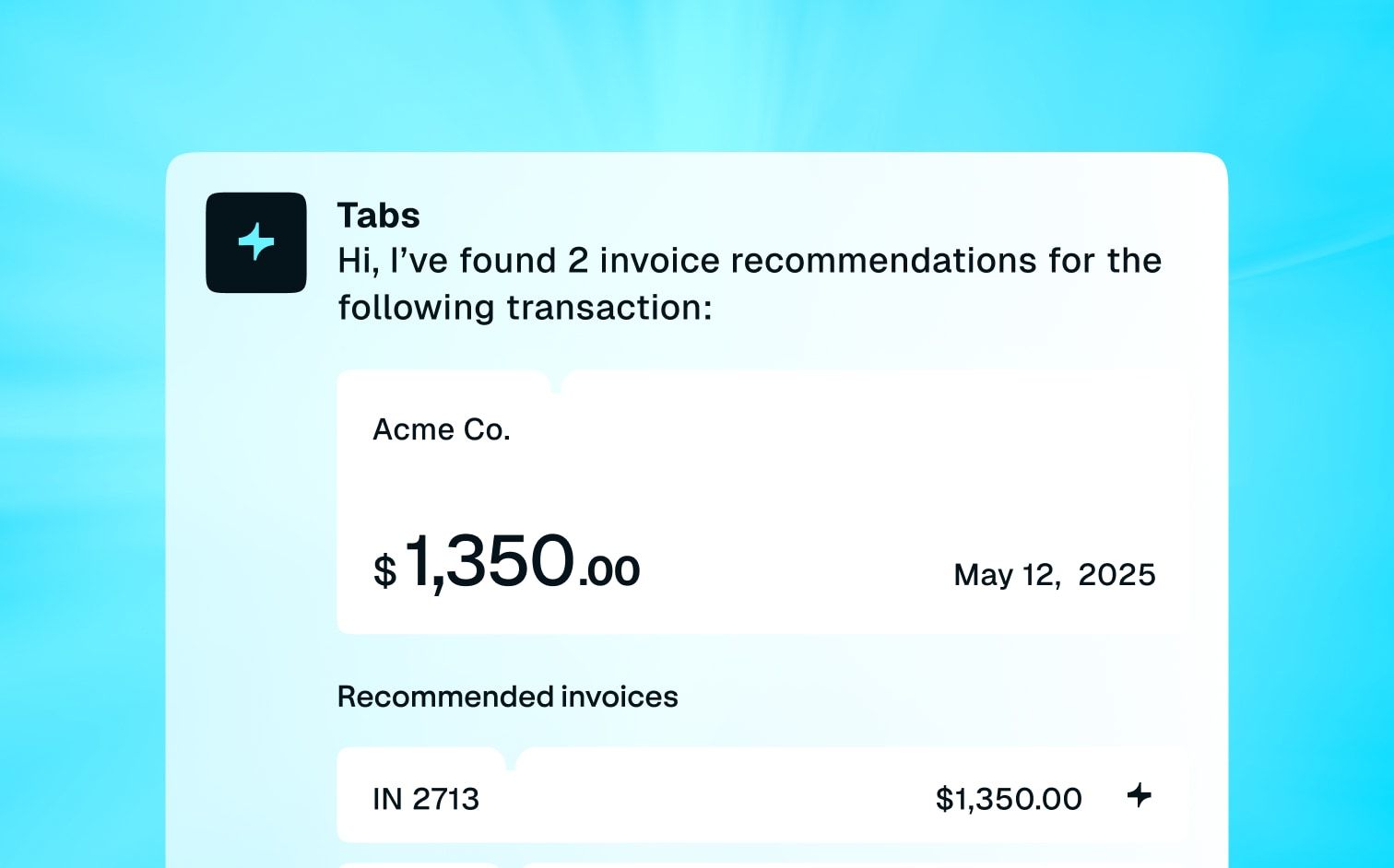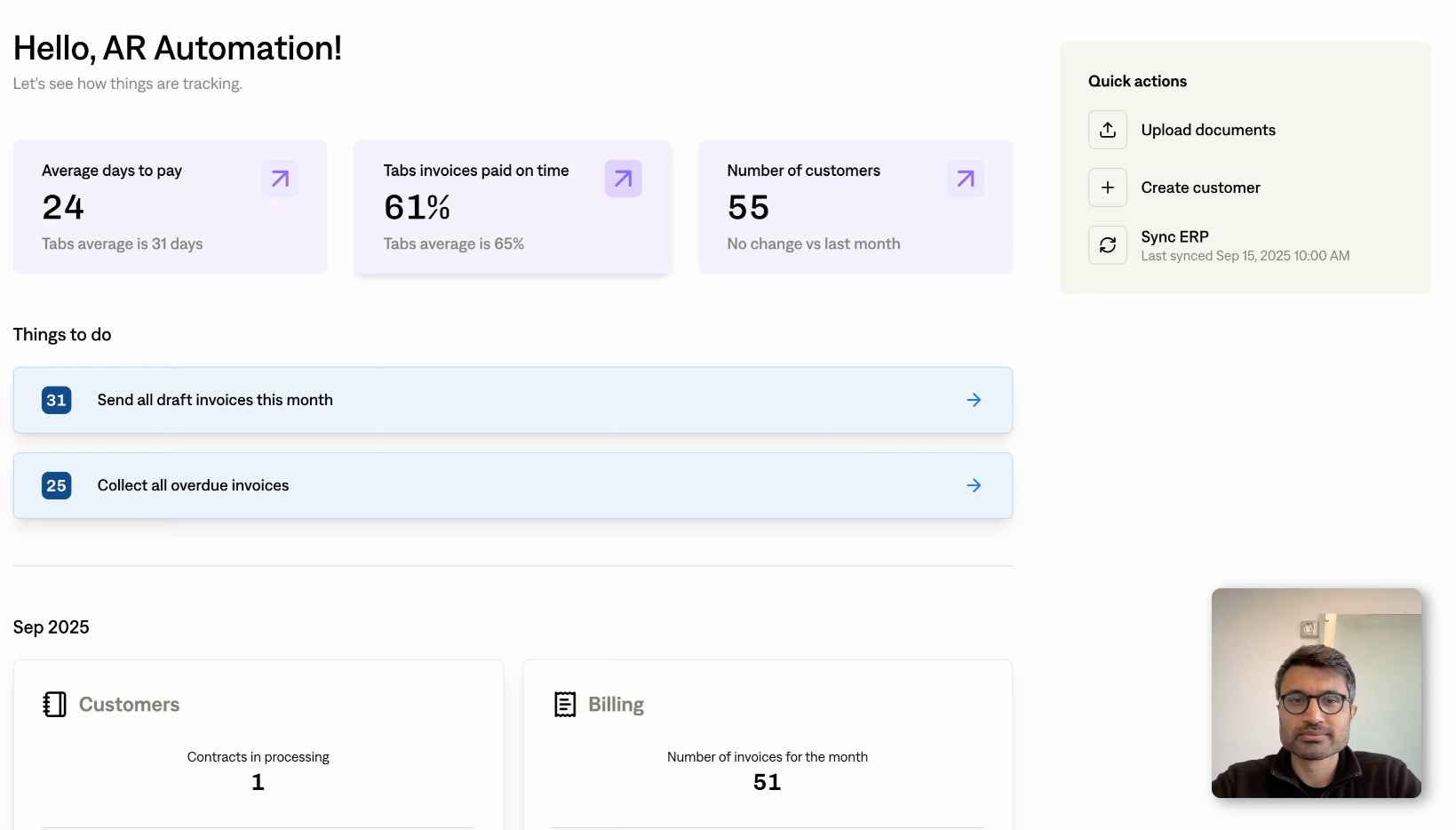Monthly Recurring Revenue (MRR) guides your financial planning, powers your growth, and indicates the health of your business. This post is your essential guide to understanding and leveraging MRR. We'll break down the different types of MRR, explain how to calculate it accurately, and explore practical strategies to increase it.
Key Takeaways
- MRR is your financial pulse: Tracking monthly recurring revenue gives you a clear picture of your SaaS business's health, predicts future income, and informs smart decision-making. Understanding its components (New, Expansion, Churn) provides a deeper understanding of your revenue drivers.
- Accurate calculation is crucial: Using the correct MRR formula and avoiding common mistakes, like including one-time payments, ensures reliable data. Leverage tools like Tabs to automate calculations and free up your team for strategic work.
- Strategic growth fuels MRR: Optimize your pricing, focus on customer success to reduce churn, and implement upselling and cross-selling strategies. Aligning these efforts with your overall business strategy sets you up for sustainable, long-term growth.
What is Monthly Recurring Revenue (MRR)?
Monthly recurring revenue (MRR) is the lifeblood of any subscription-based business. It's the predictable revenue you receive each month from your customers' recurring subscriptions. Think of it as the heartbeat of your SaaS business—a steady pulse indicating overall health and growth potential.
Its Importance for Subscription Businesses
A strong, consistent MRR is essential for forecasting, planning, and making informed business decisions. MRR provides a clear picture of your current financial standing and projects your future income. This predictability is invaluable for financial planning and allows you to allocate resources effectively.
A healthy, growing MRR signals a thriving business, attracting investors and fueling expansion. Conversely, a declining MRR can alert you to potential problems early on, giving you time to adjust your strategy. Tracking MRR is like checking your company's vital signs, ensuring everything is functioning as it should be.
Key MRR Components
Monthly recurring revenue is comprised of several key components that offer a more granular view of your revenue streams. Understanding these components helps you pinpoint areas of strength and weakness within your business. Here's a breakdown of the key MRR components:
- New MRR: Revenue generated from new customers during the month. This metric reflects the effectiveness of your marketing and sales efforts.
- Expansion MRR: Additional revenue from existing customers who upgrade their subscriptions or purchase add-ons. This indicates successful upselling and cross-selling strategies.
- Churn MRR: Lost revenue due to customers canceling or downgrading their subscriptions. Monitoring churn is crucial for identifying areas for improvement in customer retention.
- Net New MRR: The overall change in MRR from the previous month, accounting for all gains and losses. This is your bottom-line MRR growth and a key indicator of your business's trajectory.
Analyzing these different types provide a comprehensive understanding of your revenue drivers. This helps you make data-driven decisions to optimize your business for sustainable growth.
Calculate Monthly Recurring Revenue
This section explains how to calculate monthly recurring revenue and highlights common mistakes to avoid. Getting your MRR calculation right is crucial for accurate financial tracking and forecasting. A software solution like Tabs streamlines these calculations, ensuring accuracy and saving you valuable time. Learn more about how Tabs simplifies revenue recognition.
Explain the MRR Formula
Calculating MRR is straightforward. The basic formula is: MRR = (Number of Active Customers) x (Average Monthly Payment per Customer). So, if you have 500 customers each paying an average of $200 per month, your MRR is $100,000.
You can also calculate MRR by adding up the revenue from each active subscription plan. This method is particularly useful when you have various pricing tiers. Remember, MRR only includes recurring charges from active subscriptions, not one-time fees. Think of it as the predictable income your business can count on each month.
Common MRR Calculation Pitfalls
While the MRR formula itself is simple, there are some common mistakes to watch out for. Many businesses inadvertently include one-time payments, which can inflate MRR and give a misleading picture of your recurring revenue stream. Another frequent error is treating annual contracts as a single month's revenue. Instead, divide the annual contract value by 12 to get the monthly equivalent.
Also, don't forget to account for discounts when calculating the average monthly payment per customer. Ignoring these can skew your MRR calculations. Accurately calculating your MRR is the first step toward leveraging it for growth.
Tools like Tabs can automate these calculations and help you avoid these common pitfalls, ensuring your MRR data is always reliable. Learn more about how Tabs helps you extract key contract terms with AI to ensure accurate MRR calculations.
Why MRR Matters
Understanding and tracking MRR offers crucial insights into your company's current performance and future potential. It's the foundation upon which you build forecasts, assess your overall health, and make informed strategic decisions.
Forecasting and Financial Planning
MRR provides a predictable revenue stream, making financial planning significantly easier. With a clear understanding of your MRR, you can accurately forecast future revenue and allocate resources effectively. A healthy and growing MRR allows you to confidently project earnings, secure funding, and make informed investments in product development and marketing.
Conversely, a declining MRR can signal underlying issues that need immediate attention. As Wall Street Prep points out, a strong monthly recurring revenue is a key indicator of a thriving business. This predictability also allows you to adjust your spending based on performance. For example, if your New MRR is low, you might increase your marketing budget or adjust your sales strategy.
Assess Business Health and Growth Potential
Tracking MRR helps you understand how your business is performing month over month. Is it growing steadily, remaining stagnant, or declining? This real-time insight allows you to identify potential problems early on and take corrective action. Regularly reviewing your MRR unlocks valuable insights that promote sustainable growth.
By monitoring these trends, you can gain a deeper understanding of your customer acquisition and retention efforts, allowing you to fine-tune your strategies for optimal growth. A consistent upward trend in monthly recurring revenue indicates a healthy business with strong growth potential.
Inform Strategic Decisions
MRR data empowers you to make data-driven decisions across all areas of your business. From pricing strategies to product development, understanding your MRR and its various components provides the context you need to make informed choices. Combining MRR with other key metrics, such as customer acquisition cost (CAC) and customer lifetime value (CLTV), gives you a comprehensive understanding of your business performance.
This holistic view allows you to optimize your pricing models, identify opportunities for expansion, and ultimately drive sustainable growth. By leveraging monthly recurring revenue data, you can confidently implement tiered pricing, adjust your sales strategies, and focus your efforts on initiatives that will have the greatest impact on your bottom line. Stripe offers further insights into the importance of MRR for strategic decision-making. Access robust reports on key metrics for your finance team with Tabs.
Types of MRR
Understanding the different types provides a more granular view of your revenue streams, allowing you to pinpoint areas for growth and address potential weaknesses. Let's break down the key components:
New
This is the monthly recurring revenue generated from new customers acquired during a specific month. This metric directly reflects the effectiveness of your marketing and sales efforts. A consistent increase in new MRR demonstrates that your customer acquisition strategies are working, while stagnation or decline signals a need to re-evaluate your approach. Tracking new MRR helps you understand how well you're attracting new clients and the impact of your growth initiatives.
Expansion
This metric represents the increase in revenue from existing customers, typically from upsells, cross-sells, add-ons, or plan upgrades. A healthy expansion MRR indicates strong customer relationships and successful product development that meets evolving customer needs. This metric is a key indicator of customer lifetime value and your ability to monetize your existing customer base. By analyzing expansion MRR, you can identify opportunities to further enhance your offerings and deepen customer engagement.
Churn
Churn MRR is the revenue lost due to customers canceling or downgrading their subscriptions during a given month. While some churn is inevitable, a high churn rate can significantly impact your overall revenue growth. Monitoring churn MRR helps you identify potential problems with customer satisfaction, product-market fit, or pricing strategies. Understanding the reasons behind customer churn is crucial for implementing effective retention strategies and minimizing revenue loss.
Net New
This provides a holistic view of your monthly recurring revenue growth. It's calculated by adding New MRR and Expansion MRR, then subtracting Churn MRR. This metric gives you the complete picture of your revenue performance, accounting for both gains and losses.
Tracking net new MRR allows you to assess the overall health of your SaaS business and the effectiveness of your growth strategies. A positive net new MRR indicates sustainable growth, while a negative value signals the need for corrective action. You can learn more about calculating net MRR to gain deeper insights into your business performance.
Improve Your Monthly Recurring Revenue
Want to boost your monthly recurring revenue? Here’s how:
Optimize Pricing Models & Implement Tiered Pricing
Experiment with different pricing plans to see what resonates with your customers. This allows you to maximize your revenue potential. Tiered pricing, where you offer different levels of service at different price points, can be particularly effective. Consider offering a freemium model to attract new users and then encourage upgrades to paid plans with additional features.
Testing is key—analyze your data to understand which pricing strategies yield the highest MRR. Tabs can help you manage complex pricing models and automate billing for various tiers, simplifying revenue recognition.
Enhance Customer Retention and Success
Happy customers are more likely to stick around, so ensure your product helps customers achieve their goals. Prioritize excellent customer service and consider implementing loyalty programs to reward your subscribers. A strong customer success program can significantly reduce cancellations and improve retention, directly impacting your MRR. Proactively address customer issues and gather feedback to continuously improve your product and service.
Upsell and Cross-Sell
Upselling encourages existing customers to upgrade to higher-tier plans with more features and benefits. This is a powerful way to increase your MRR without acquiring new customers. Cross-selling involves offering complementary products or services to your existing customer base. For example, if you sell project management software, you could cross-sell time-tracking tools or reporting add-ons.
Streamline Onboarding
A smooth onboarding process is crucial for customer satisfaction and retention. Provide clear documentation, helpful tutorials, and responsive support to guide new users. The faster customers experience value from your product, the more likely they are to stay subscribed, contributing to a healthier MRR. Consider using in-app prompts and personalized messages to engage users during the onboarding phase.
Overcome Common Challenges
Successfully growing your SaaS business means tackling common roadblocks that can impact your MRR. Let's break down some practical strategies to help you navigate these challenges:
Reduce Customer Churn
Losing customers means losing recurring revenue, which directly impacts your monthly growth. Prioritizing customer satisfaction and engagement is key to keeping your churn rate low. A strong customer success program can identify potential churn risks early on and proactively address them.
Regularly collecting customer feedback and acting on it shows you value their input and are committed to improving their experience. This can significantly improve customer retention and contribute to a healthier MRR. For example, you could offer incentives for annual subscriptions or implement a customer loyalty program. Clear and consistent communication with your customers can also build stronger relationships and reduce churn.
Manage Seasonal Fluctuations
Understanding these seasonal trends is crucial for accurately forecasting your MRR and planning your budget. Analyze historical data to identify peak and slow periods. Once you have a grasp of your seasonal patterns, you can proactively adjust your marketing and sales strategies. For example, during slower months, you might focus on customer retention efforts or special promotions to boost subscriptions.
Consider offering discounts or bundling features to incentivize new sign-ups. During peak seasons, ensure your infrastructure can handle the increased demand and your team is prepared to support new customers. This proactive approach will help you maintain a more consistent MRR throughout the year.
Track Complex Subscription Models Accurately
Modern SaaS businesses often have complex subscription models with various pricing tiers, add-ons, and discounts. Manually tracking these intricacies can be a nightmare, leading to inaccuracies in your monthly calculations. Using a robust billing platform designed for recurring revenue is essential. Look for features like automated invoicing, revenue recognition, and detailed reporting.
These tools automate complex calculations, provide real-time insights into your MRR, and free up your team to focus on strategic initiatives. Accurate tracking is the foundation for understanding your business performance and making informed decisions to drive growth. This also allows you to quickly identify areas for improvement and optimize your pricing strategies for maximum revenue generation.
Essential Metrics to Track
Monthly recurring revenue is a north star metric for SaaS businesses, but to really steer your growth, you need supporting metrics. Here are a few essential metrics to track alongside your MRR:
Customer Lifetime Value (CLV)
Customer lifetime value (CLV) predicts the total revenue you can expect from a single customer throughout your entire relationship. Understanding CLV helps you make smart decisions about sales, marketing, and customer success. For example, a high CLV might justify higher customer acquisition costs. A low CLV, on the other hand, might signal that you need to improve your customer retention.
Analyzing CLV alongside MRR gives you a clearer picture of long-term profitability and helps you balance acquisition spend with long-term customer value. For a deep dive into calculating and interpreting CLV, check out our guide on understanding customer lifetime value.
Customer Acquisition Cost (CAC)
Customer acquisition cost (CAC) is the total cost of acquiring a new customer. This includes marketing expenses, sales team salaries, and any other related costs. Tracking CAC in relation to MRR is crucial for understanding the efficiency of your customer acquisition strategies. If your CAC is too high relative to your MRR, your growth might not be sustainable.
You’ll want to find ways to lower your CAC or increase your MRR (or both!). Tabs offers robust reporting on key metrics, allowing you to keep a close eye on CAC and ensure your growth remains profitable.
Average Revenue Per User (ARPU)
Average revenue per user (ARPU) is rather self-explanatory—it measures the average revenue generated per user or account. It’s calculated by dividing your total revenue by the number of users. Monitoring ARPU alongside MRR provides valuable insights into your pricing strategies and overall customer value.
A healthy ARPU is essential for sustainable growth. If your ARPU is low, you might consider adjusting your pricing, upselling existing customers, or focusing on acquiring higher-value customers. Understanding ARPU helps you fine-tune your revenue streams and maximize your MRR growth. For more on pricing strategies, take a look at our resources on value-based pricing.
Leverage MRR Data for Business Growth
By understanding how to leverage monthly recurring revenue data effectively, you can identify trends, make informed decisions, and align your growth initiatives with your overall business strategy. This allows you to allocate resources more effectively and achieve sustainable growth.
Identify Trends and Patterns
Regularly reviewing this data can reveal valuable insights into customer behavior and revenue fluctuations. For example, an upward trend in your MRR suggests your strategies are working, while a downward trend signals the need for adjustments. Analyzing MRR movements helps you understand the impact of product launches, marketing campaigns, and pricing changes on your revenue streams.
This knowledge empowers you to fine-tune your approach and optimize for better results. You can also identify seasonal patterns that influence your MRR, allowing you to anticipate fluctuations and plan accordingly.
Make Data-Driven Decisions
MRR data empowers you to make informed decisions across various aspects of your business. Instead of relying on guesswork, you can use concrete data to refine your pricing strategies, improve customer retention, and identify opportunities for upselling and cross-selling. For instance, if your MRR data reveals a high churn rate for a specific pricing tier, you can investigate the reasons behind it and adjust your offerings or pricing accordingly.
Data-driven insights also improve financial forecasting, allowing you to predict future revenue with greater accuracy and make more strategic investments. Tabs offers robust reporting features that provide key metrics for finance teams, enabling this data-driven decision-making.
Align MRR Goals with Overall Business Strategy
This ensures that your growth initiatives are cohesive and contribute to your long-term objectives. For example, if your business strategy prioritizes expanding into new markets, your MRR goals should reflect this by focusing on acquiring new customers in those target markets. By connecting your MRR goals to your broader business objectives, you can create a unified roadmap for growth and ensure that all your efforts are working towards a common purpose.
Related Articles
- MRR Unpacked: Key Strategies and Calculations
- Recurring Revenue: A Practical Guide for SaaS Growth
- Annual Recurring Revenue (ARR): Your Complete Guide
- Understanding CMRR in SaaS: Key Metrics and Strategies
- ARR Guide: Understanding Annual Recurring Revenue
Frequently Asked Questions
What's the simplest way to define Monthly Recurring Revenue (MRR)?
MRR is the predictable income your subscription business receives each month from recurring customer payments. It's the foundation for financial planning and a key indicator of your business's health.
How can I accurately calculate MRR without making common mistakes?
The basic formula is: MRR = (Number of Active Customers) x (Average Monthly Payment per Customer). However, be sure to exclude one-time payments, correctly account for annual contracts, and factor in discounts to avoid miscalculations. Using a billing platform like Tabs can automate these calculations and ensure accuracy.
Beyond financial planning, how else does understanding MRR benefit my business?
MRR provides crucial insights into your business's overall health and growth potential. By tracking MRR trends, you can identify potential problems early on, assess the effectiveness of your strategies, and make data-driven decisions to optimize for sustainable growth.
What are the different types of MRR and why are they important?
Understanding the components of MRR—New MRR, Expansion MRR, Churn MRR, and Net New MRR—gives you a more granular view of your revenue streams. This allows you to pinpoint areas of strength and weakness, optimize pricing strategies, and improve customer retention efforts.
How can I actually use MRR data to improve my business's performance?
By leveraging MRR data, you can identify trends, make informed decisions about pricing and customer acquisition, and align your growth initiatives with your overall business strategy. This data-driven approach empowers you to achieve sustainable growth and maximize your revenue potential.





